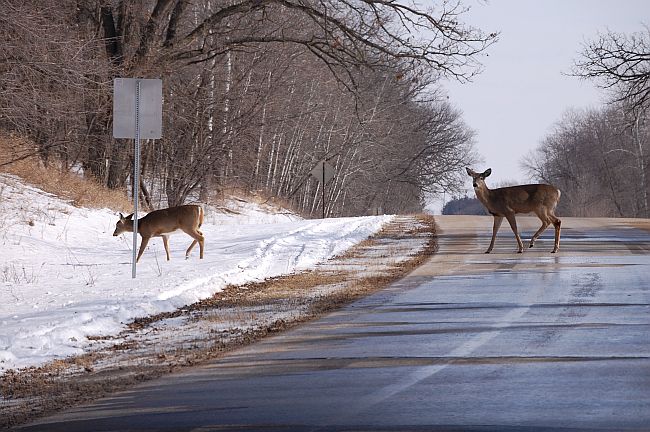Most deer–vehicle accidents occur during the months of October, November and December. Another peak occurs in May and June as one-year-old deer are dispersing to new areas. However, accidents can happen at any time of year. Deer are crepuscular, meaning that they are active at dawn and dusk. So it is not surprising that most accidents involving deer happen between the hours of 5 to 10 p.m. and 5 to 8 a.m.
White-tailed deer killed/injured as a result of a collision with a motor vehicle may be legally possessed by an individual if the following criteria are met:

Photo: IDNR image gallery
The Wildlife Illinois website was authorized by the Illinois Department of Natural Resources (IDNR) in partial fulfillment of project W-147-T. The website was developed by the National Great Rivers Research and Education Center, 2wav, and the IDNR in partnership with the United States Department of Agriculture Animal and Plant Health Inspection Service Wildlife Services and University of Illinois Extension to provide research-based information about how to coexist with Illinois wildlife.